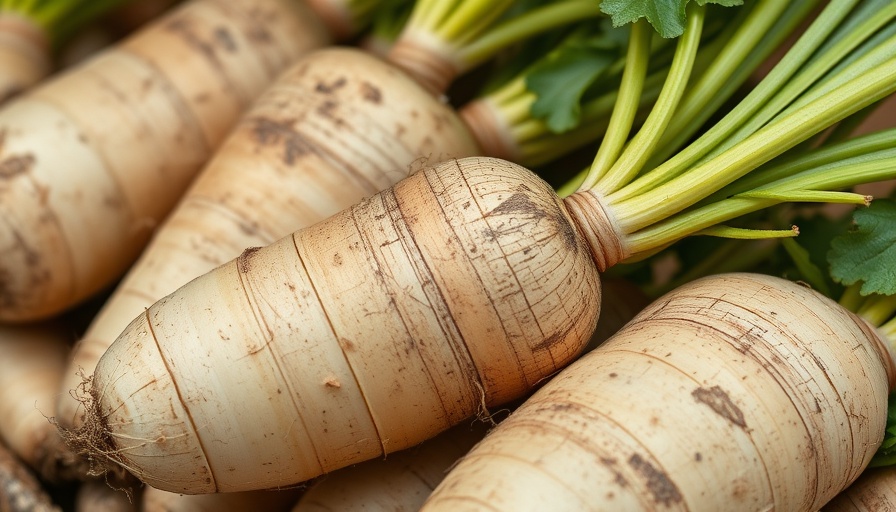
Understanding the Unique Characteristics of Horseradish
Horseradish (Armoracia rusticana) stands out in the vegetable garden, not only for its robust flavor but also its growth habits. This perennial plant grows from its main root, which means that the roots you harvest are just the tip of the iceberg. Cultivators should remember that timing and technique are essential for obtaining the best flavor and texture. Unlike typical garden vegetables that flourish through seeds, horseradish requires a more hands-on approach that requires an understanding of its lifecycle.
Optimal Timing for Harvesting Horseradish
The right time to harvest horseradish can significantly impact the quality of the roots. Experts recommend waiting until after the first hard frost, as this cool weather promotes starch and sugar storage, adding to the root's signature heat and flavor. Growing horseradish also takes about one year, so patience is key. Those looking to harvest horseradish should plan to do so in the fall, once the ground is thawed. This strategy ensures that the roots have reached their full potential, leading to superior culinary experiences.
Best Practices for Manual Harvesting
Manual digging is the preferred technique for home gardeners. Using a garden fork allows for precise digging around the root without damaging it. As you get ready to harvest, remember to ease the soil approximately one foot from the base of the plant - this method mitigates the risk of fracturing segments of the root. After successfully lifting the plant, you’ll want to trim any offshoots, particularly keeping roots that are at least eight inches long for replanting next season.
Storage Techniques: Keep Your Horseradish Fresh
A crucial aspect of harvesting is what to do with your bounty afterward. For immediate consumption, rinse the roots and store them in a sealed plastic bag in the refrigerator. If you intend to save your horseradish for the long haul, root cellars with sand or a plastic bag with moist sand in the fridge serve as good options. These methods keep the roots hydrated and fresh for extended periods, ready for any culinary purpose you might have.
Dos and Don'ts of Horseradish Harvesting
To ensure the best harvest, consider the following expert-approved dos and don’ts:
- Do wait until the root is sufficiently mature, generally reaching around a year’s growth.
- Don't rush the harvesting; pulling the root too soon compromises flavor and size.
- Do use clean tools to prevent soil contaminants from affecting your harvest.
- Don't forget to label your harvested roots, particularly if you plan to replant.
Common Misconceptions About Horseradish Harvesting
Many believe that horseradish can be harvested anytime, leading to disappointment in flavor and texture. Another common misconception is the idea that mechanical harvesting is superior to manual methods. However, for home gardeners, manual techniques often yield the best results while preserving seed quality and flavor. By adhering to harvesting times and techniques outlined by experts, you not only enhance your gardening skills but also improve the quality of your home-cooked meals.
Final Thoughts: Embrace the Flavor of Fresh Horseradish
Understanding the intricacies of horseradish harvesting can transform how you view this unique vegetable. Not only does it showcase your gardening skills, but it also enhances your culinary endeavors. With its impressive health benefits and renowned flavor profile, horseradish deserves a spot in every home garden. As you gather your tools and prepare to harvest, keep these tips in mind to ensure a successful and flavorful experience.
Have you harvested horseradish before? If so, share your experiences and tips with fellow readers!
 Add Row
Add Row  Add
Add 



Write A Comment